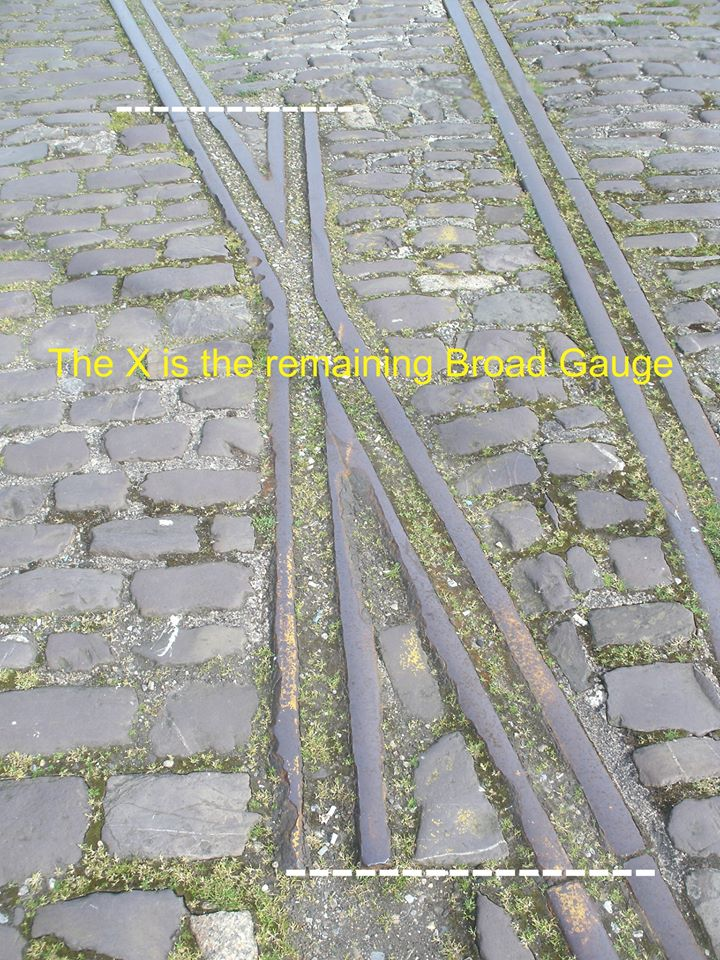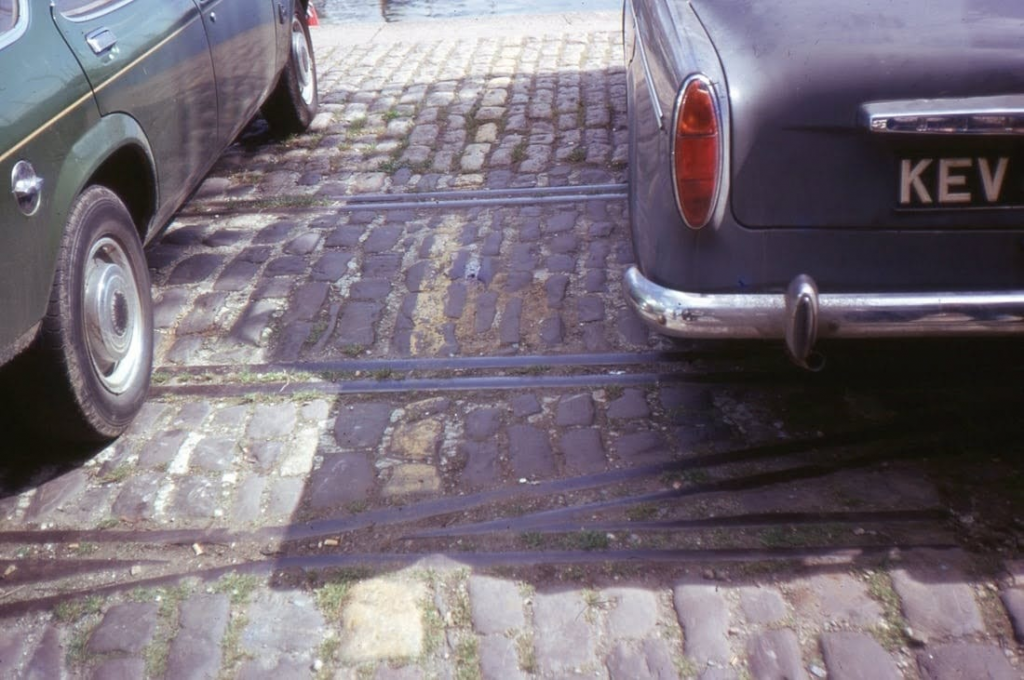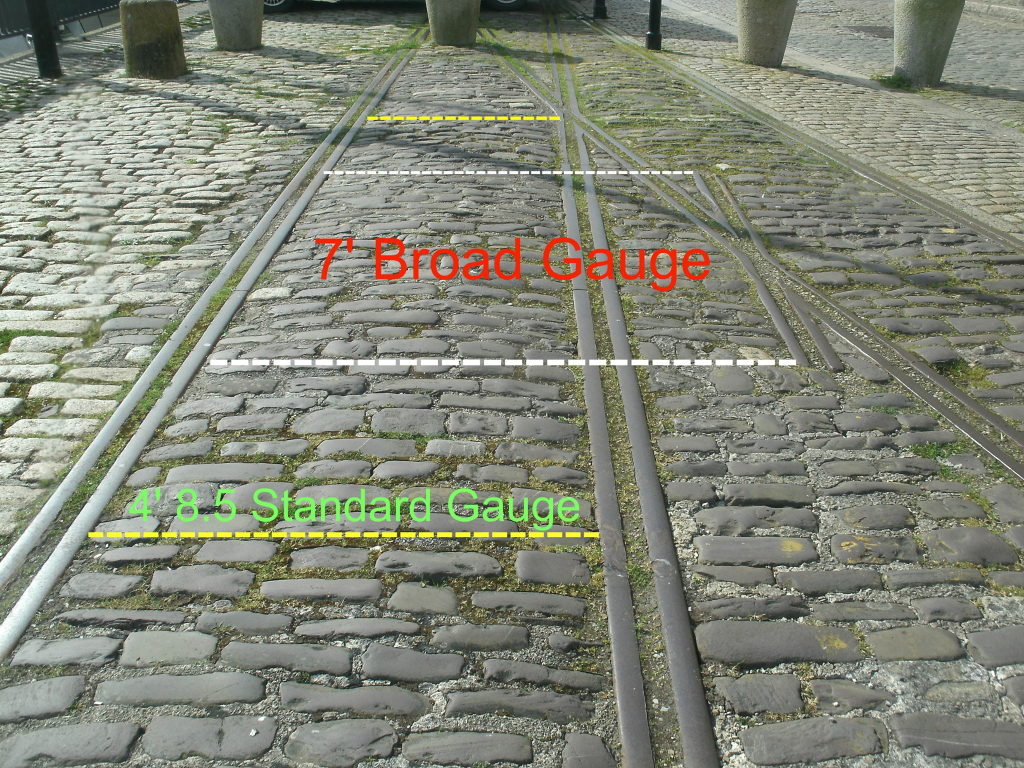Where did the ¼” come from?

“Standard” / “Stevenson’s” gauge, around the world is 4′ 8½”, 1.435 m, seemingly a fairly arbitrary dimension. But Brunel begged to differ. The only true gauge in his mind was seven foot. Other gauges were “narrow“, and 7ft whilst costing 12% extra in infrastructure costs would add a whole lot more in size and weight capability as well as high-speed stability.
The ¼” came from the necessity for gauge easing on curves, and actually didn’t make much difference elsewhere, so…
The railway to Plymouth was built on Brunel’s gauge but didn’t survive past 21.05.1892 when the entire GWR network was converted to standard gauge overnight.
The last vestige of Broad Gauge still exists on the waterfront on Sutton Harbour, Plymouth, UK, amongst the most extensive system of cobbled streets in the UK.


Thanks to @Malcolm Harrison & @Brian Moore for the images…
